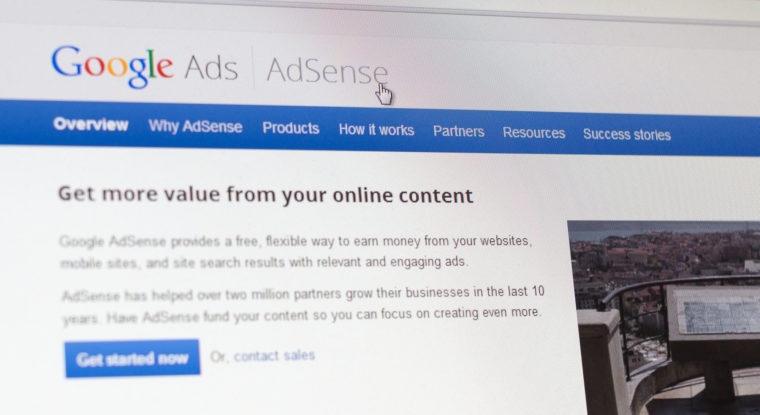Hello AdSense publishers and partners! In this article, I’ll cover a general SEO question, as well as provide some background on our “Valuable Inventory” policy update, which has generated a lot of questions through a number of channels. In short, this policy update refers to the maximum number of ads a publisher can have on a page, while remaining policy compliant.
I’ll also provide links to resources that we’ve created to help publishers better understand this policy update.

(Q) How does using AdSense affect SEO?
(A) I’ve received several questions related to SEO recently, especially from readers of Search Engine Journal.
Google search results pages include organic search results as well as paid advertisements. Google does not give a higher ranking to websites that run AdSense, just as advertising with Google won’t have any effect on your site’s presence in our organic search results.
In general, by choosing to not follow best practices, lower rankings are possible. If you have little content but have a lot of ads or other elements that prevent users from engaging with your content, you likely will not rank very high.
Google is focused on driving long-term loyalty from our users online, which means we do our best to create a rewarding digital experience for them. And in general, our policies are there to protect and help them by generating results that they are happy to come back for the next time around.
My advice to all publishers is to always follow AdSense policies and use best practices with respect to SEO to generate the best results. We provide SEO resources which can potentially be used to help publishers improve their site and save time, without damaging their sites.
(Q) What do you mean by “Valuable Inventory” in the Google AdSense ad limit?
(A) A variation of this question has been asked several times. In general, we are always fine-tuning our policies to make sure they reflect the current environment. Some publishers have Infinite Scroll websites, which has provided challenges to our ads per page policies. Other publishers simply asked if we would revisit our policy. Many good publishers thought they could balance providing great content in a user-friendly way, while improving their monetization.
We recently changed our ad placement requirements related to “Valuable Inventory” which outlines our policy related to the maximum number of ads a publisher can have on a single page. Instead of limiting publishers to a specific number of ads (it used to be three per page), the updated policy requires publishers to have at least as much original content as ads. This includes Google and non-Google ads, including text, image, rich media, video, native, click-to-download, product listing ads, and other formats.
We think this better takes into account how we interact with web pages on mobile devices and encourages publishers to embrace experiences like infinite scrolling and in-stream video with suffering revenue losses. As always, we encourage publishers to keep the user experience in mind and require they have more original content than ads on the page.
At Google, we understand that publishers are often faced with the question of how to balance content and ads to provide the best possible experience for users while effectively monetizing their sites. Clearly, there’s no easy one-size-fits-all approach. Every site and app are different, with different types of content, objectives, and users. This means that balancing content and ads will look different from publisher to publisher. When faced with this challenge, it’s important to ensure that you give your users what they’re looking for in a format that’s easy to find and navigate, and this includes the ads on your page or app.
Here are a few tips to help you balance ads and content:
1. Content is most important: Your content is the reason users are visiting your site or app. Your users are visiting your site for a reason, whether they are looking for a recipe, how to build a birdhouse, or trying to find out what’s happening in their town. By providing them with the information they’re looking for, you satisfy their need at the moment that they need it the most. To learn more about winning these micro-moments, please see a blog post we published earlier this year.
2. Design your site or app around the user journey: By making your content the focal point on the page and following standard web best practices, you can create a site that’s visually appealing and easy for your users to use and navigate. Check out the AdSense Guide to Audience Engagement for best practices on designing user journeys, not just web pages.
3. Use ads to complement your site or app: Ads should always supplement the content on your site, not the other way around. So when you’re placing ad units on your site, consider the user journey and how the ad format will complement your site and provide value for your users. If you want ads to look more natural and match the feel of your content, consider using native ad units.
4. Test, test, test, and test again: At the end of the day, data will be your source of truth. If you’re considering implementing new ad units, run an AdSense experiment to see how they perform. Also, test the different formats to see what works best for your users and your page.
Additionally, we encourage publishers to review our Ad Placement Policies for general ad placement guidance.
We love your feedback, and look forward to continuing this dialog. Keep the questions coming!
JB
Image Credits
Featured Image: Paulo Bobita
In-post Image: ibreakstock/DepositPhotos





![AI Overviews: We Reverse-Engineered Them So You Don't Have To [+ What You Need To Do Next]](https://www.searchenginejournal.com/wp-content/uploads/2025/04/sidebar1x-455.png)